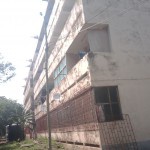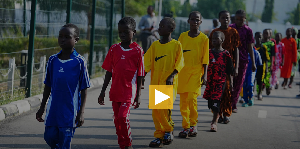Buildings in the dwelling place of junior doctors at the nation’s premier hospital, the Korle-Bu Teaching Hospital (KBTH,) are collapsing and striking incessant fear of death in the hearts of the healthcare providers whose job is to save lives.
Located close to the South-western gate of the biggest health facility in West Africa, the flats which have served doctors of the facility for more than five decades are in a state of near-dilapidation and showing obvious signs of possible collapse unless something is done soon.
Interestingly for KBTH, these particular (N-Block and School of Allied Sciences hostel) is one of the views of the hospital that greet using the South-Western gate that leads to the lorry station of the hospital.
Commissioned on October 9, 1923 by then British Governor, Sir Gordon Guggisberg, the third largest hospital in Africa has grown to become a leading household name and the largest referral centre in the country.
Korle Bu can also boast of the production of various globally acknowledged medical experts whose skill in their chosen fields has helped improve the world of medicine.
However, the facility which produced and has seen tremendous improvement at the hands of notable personalities, such as Dr. Kwabena Frimpong Boateng of the Cardiothoracic Centre, facesmany challenges including the collapsing state of residential flats for junior doctors.
On a recent visit to the premises, Today observed deep cracks developing in the buildings.
Close examination of the cracks showed that they have developed over the years due primarily to a lack of proper maintenance of the buildings.
Most of the cracks are particularly noticeable in the washrooms and also on the building used by the University of Ghana’s School Of Allied Health Sciences as a hostel for its students.
In some instances cement mortars could be seen spread over the cracks to close the cracks and the mortar painted over. And it is easy to also observe old naked electrical wires hanging loosely on some of the walls.
“I have never seen this building painted or receive any major rehabilitation works ever since I started coming to this hospital to play as a kid…” 27-year-old Nii Nortey said when Today accosted him, “It’s always been the same.”
A building expert tells this paper that the cracks would continue to cut deep into the building and can lead to its collapse in the near future.
For areas in a hospital, the surroundings of the buildings look dirty, and the growth of (green spirogyra at the base of the building where water constantly hits it) announce to the onlooker the fact of lack of maintenance over years.
As at the time Today visited the facilities, bushes around the facility have also not been weeded for some time now, raising the potential of reptile attacks on occupants, especially at night.
Ironically, in the midst of the filth live competent doctors, whose job is also to advise patients on maintaining a clean environment to promote personal and general health.
The steps forming the staircase in the hostel (of the University of Ghana’s School of Allied Health Sciences) have developed “potholes” as parts of the terrazzo surfaces are ripped off in ways that hold potential danger to persons, particularly at night.
Unfortunately, the state of the washrooms is no different as most of the facilities, installed decades ago, have outlived their usefulness and are crying for changed.
General News of Monday, 4 March 2013
Source: Today
DANGER! Korle-Bu flats collapsing













